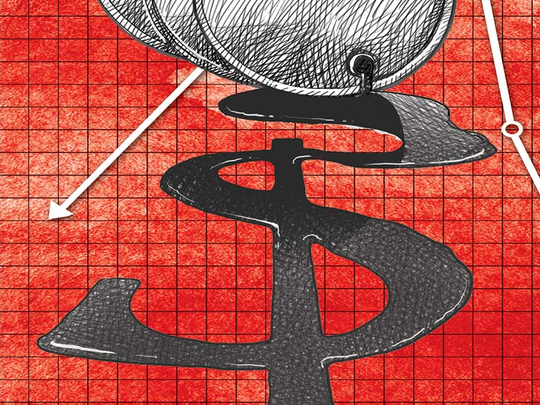
The job of Norway’s $820 billion sovereign wealth fund, the largest of those that confess up to the amount of assets in their care, is to prepare for the day when the oil money stops rolling in.
Such a day may arrive sooner than expected as, while the country still has ample reserves of crude, the collapse in its price has slowed the cash to a trickle, a mere $2 billion in the first half of this year.
Adjustments to Norway’s holdings, which include a noticeable percentage of the world’s stock markets, will have to come from reinvesting dividends and coupons, its manager said.
Norway does not have to sell assets, yet. Saudi Arabia has redeemed tens of billions of dollars from fund managers.
The Saudi Arabian Monetary Agency’s foreign reserves have dropped by more than $70 billion in the past year after a slump in oil revenues. Asset managers are braced for more redemption notices.
Changes in the wealth of these nations signal a change to the flow of dollars through the financial system, as well as a connection between financial markets, commodities and the supply of credit. Once again the question is the degree of linkage between a rising price for assets and the uncertain effects when the price of those assets falls.
A decade ago it was US houses, now it is copper, iron ore and oil.
Part of the story may be the extent to which raw materials became “financialised”. As prices for commodities rose, it became harder for investment committees of pension funds to ignore claims that basic materials represent an asset class they should own.
Funding the commodities industry moved from stodgy trade finance teams to go-getting traders at investment banks, which threw people and money at commodities trading.
However, regulatory changes made the banks start to rethink the value of commodity trading. By the middle of last year several had withdrawn, ceding the market to specialist groups such as Glencore, the miner and trading house that spent much of last week trying, with apparent success, to convince investors it will survive.
Izabella Kaminska on FT Alphaville has long explored the role the withdrawal of the banks, or de-financialisation, may have played in precipitating the drop in commodity prices.
The next chapter is the impact of fewer dollars flowing to the countries, and companies, that produce raw materials. An old term finding new life now its absence is felt is petrodollars, the proceeds made by Saudi Arabia and Norway from selling oil that find their way back into the system, underpinning the extension of credit across the world.
RBS estimates oil exporters had $700 billion to $800 billion a year to invest while oil prices were high. Much of the cash went into fixed income as sovereign investors, just like US mutual fund savers, showed a preference for bonds after the financial crisis.
Demand for government debt lowered interest rates, and so borrowing costs around the world.
The amounts for dollars lent directly to companies in emerging markets have risen significantly as well, and research from the Bank for International Settlements suggests much excess corporate cash was deposited in developing country banks, further aiding credit creation.
So what happens when the flow of dollars shuts off, or reverses? One consequence is more de-financialisation, with commodity prices becoming more volatile as fewer traders risk capital, and a rise in the cost of credit for commodity related activities.
Business models based on holding piles of real assets to facilitate financial trading may simply not work without access to cheap debt.
Another is a flow of dollars out of emerging markets. Investors have pulled money from funds investing in sovereign emerging market debt, both local and hard currency, since July. But for funds investing in the dollar debt of companies, it is only in recent weeks that inflows have started to slow.
Capital flight is yet to begin, but if it does it may surprise some buyers of high-quality corporate debt who find themselves holding the large energy and raw materials companies now included in investment grade bond indices.
Are they prepared for difficult days ahead?
— Financial Times












